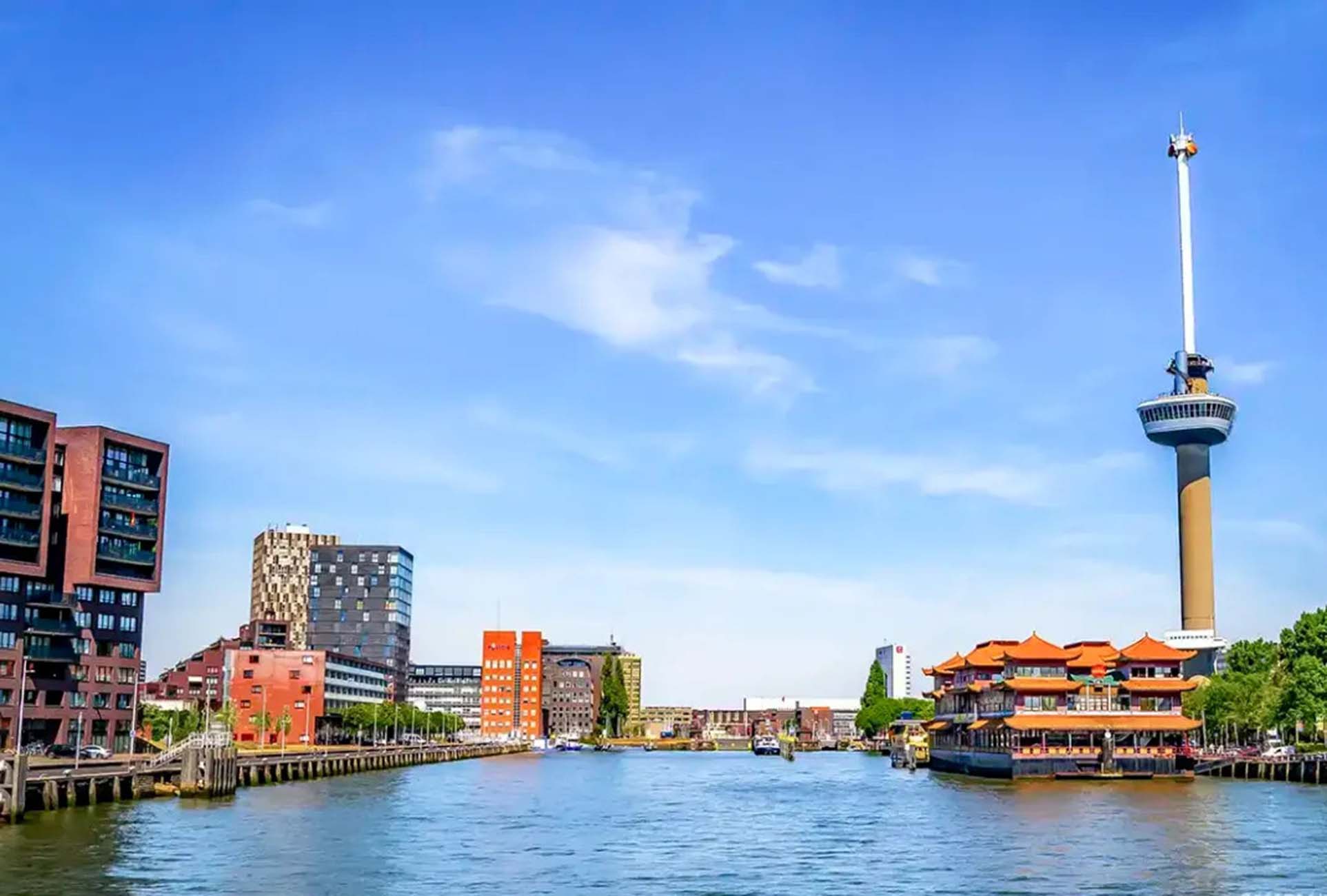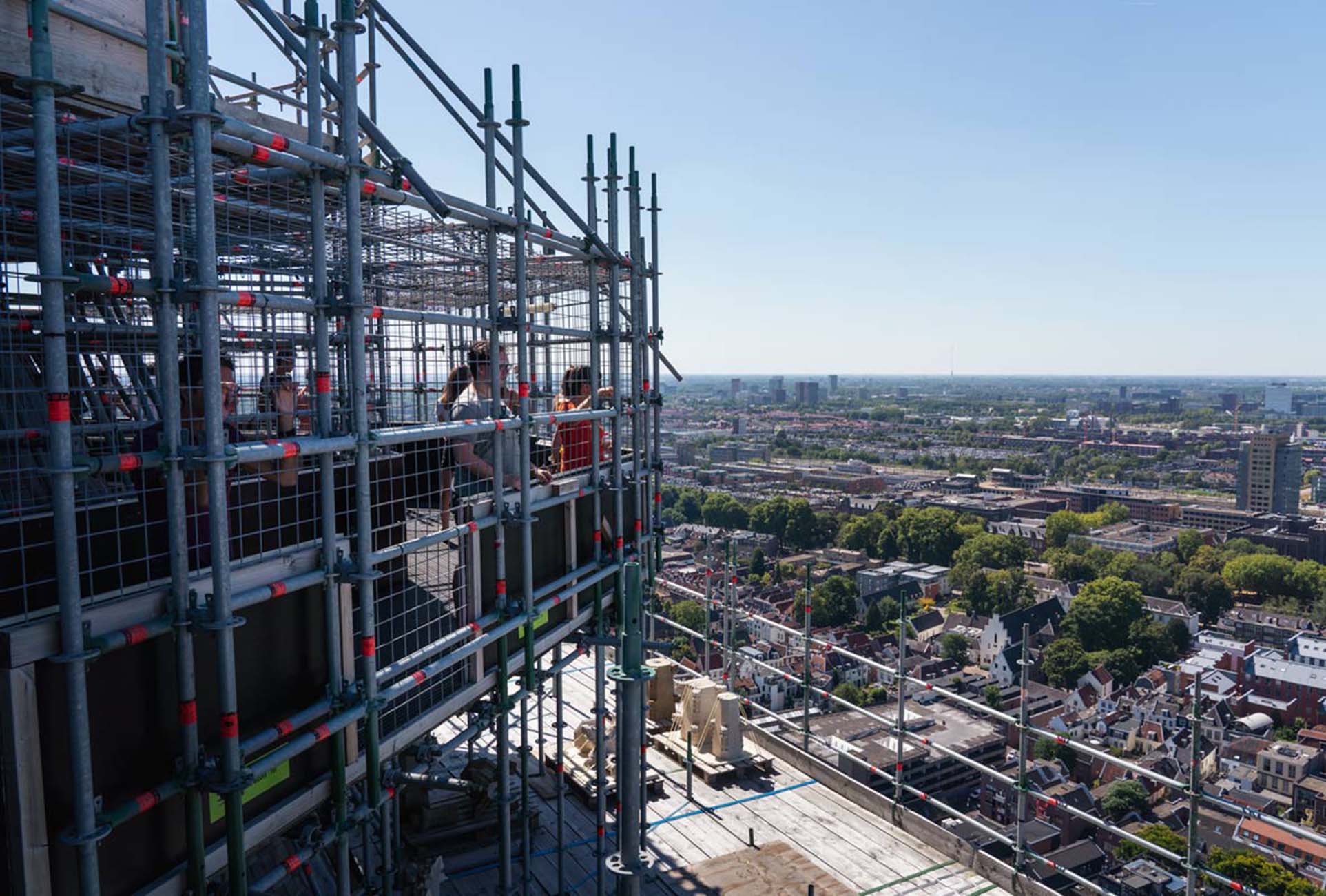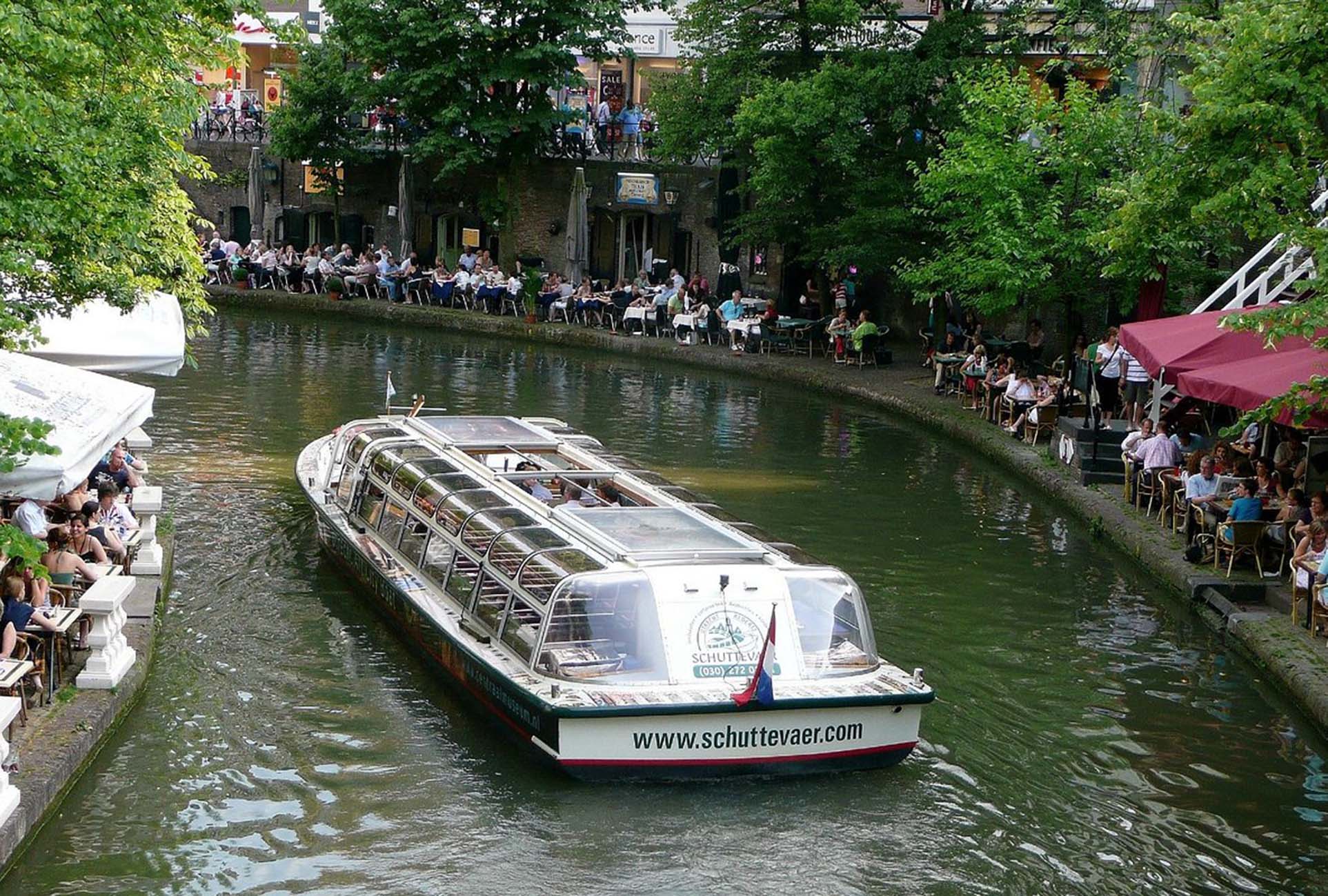Rotterdam is a city that took me by surprise. Unlike many European cities that boast ancient history and old-world charm, Rotterdam’s vibrancy comes from its modernity, creativity, and resilience. The city was almost entirely rebuilt after World War II, and it now stands as a beacon of innovation, architectural brilliance, and cultural diversity.
1. The Cube Houses (Kubuswoningen)
The first thing that drew me in when planning my visit was Rotterdam’s iconic Cube Houses. Designed by Dutch architect Piet Blom in the 1970s, the Cube Houses are truly a marvel. As soon as I arrived at the site, I found myself staring in awe at the tilted, cube-shaped buildings. These houses, which sit at a 45-degree angle, look almost like a surrealist painting brought to life.
Walking through the narrow streets surrounding the Cube Houses, I was struck by how these quirky buildings seemed to defy gravity. I toured one of the houses, which is open to the public as a “show cube” (museum). Inside, I discovered how the geometric oddity works as a functional living space. The compact interior was a little disorienting at first with its slanted walls, but the clever use of space and natural light left me impressed.
The Cube Houses are located near Blaak Station, making them very accessible via public transport. I highly recommend a visit not just for the architecture, but for the unique experience of exploring one from the inside.
2. Erasmus Bridge (Erasmusbrug)
Next up on my list was the Erasmus Bridge, or as the locals call it, the “Swan.” This is perhaps one of the most visually stunning landmarks in Rotterdam, and crossing it on foot was an unforgettable experience. Stretching across the Nieuwe Maas River, the bridge connects the northern and southern parts of the city. I walked across it in the late afternoon when the sky was tinged with hues of orange and pink.
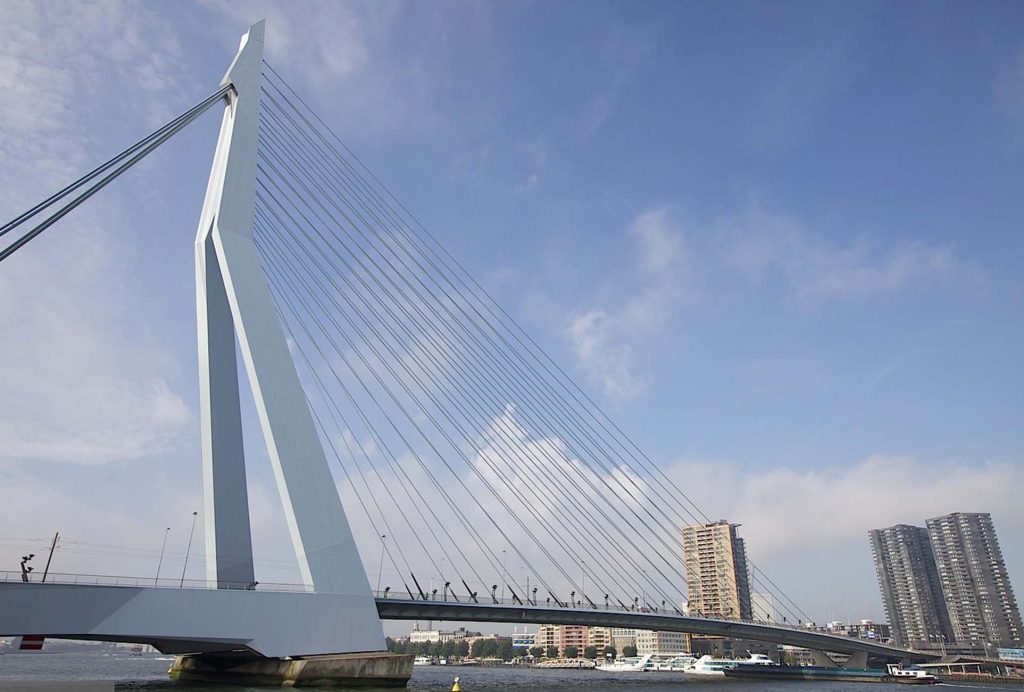
As I strolled along, I admired the bridge’s sleek, modern design with its single asymmetrical pylon. At night, it’s lit up beautifully, creating a dramatic silhouette against the skyline. The bridge is a major transportation route, but walking or biking across is a peaceful way to enjoy panoramic views of the city. If you’re like me and enjoy photography, the Erasmus Bridge is a must—there’s something about its elegance that makes it stand out against Rotterdam’s bold architecture.
3. Markthal (Market Hall)
Hungry from my walk, I headed to the Markthal, one of Rotterdam’s most famous food markets. This enormous indoor market doubles as an architectural masterpiece. The curved, horseshoe-shaped building contains both residential apartments and a massive market on the ground floor. As I walked through the entrance, my senses were immediately overwhelmed by the aromas of fresh bread, seafood, and exotic spices.
One of the most striking features of the Markthal is its ceiling. Known as the “Horn of Plenty,” the interior is covered in vibrant artwork that depicts fruits, vegetables, and flowers. It felt like standing inside a giant art gallery while surrounded by bustling food stalls. I spent a good couple of hours sampling Dutch cheeses, stroopwafels, and international cuisines from the various vendors. If you love food and art, Markthal is a place where both meet in perfect harmony.
4. The Euromast
For panoramic views of Rotterdam, I made my way to the Euromast, the tallest building in the city. Standing at 185 meters, this observation tower offers an unparalleled perspective of the city and beyond. I took the elevator up to the viewing platform, which is at a height of 100 meters. The ride itself is exhilarating, but the real magic happens when you step out onto the platform.
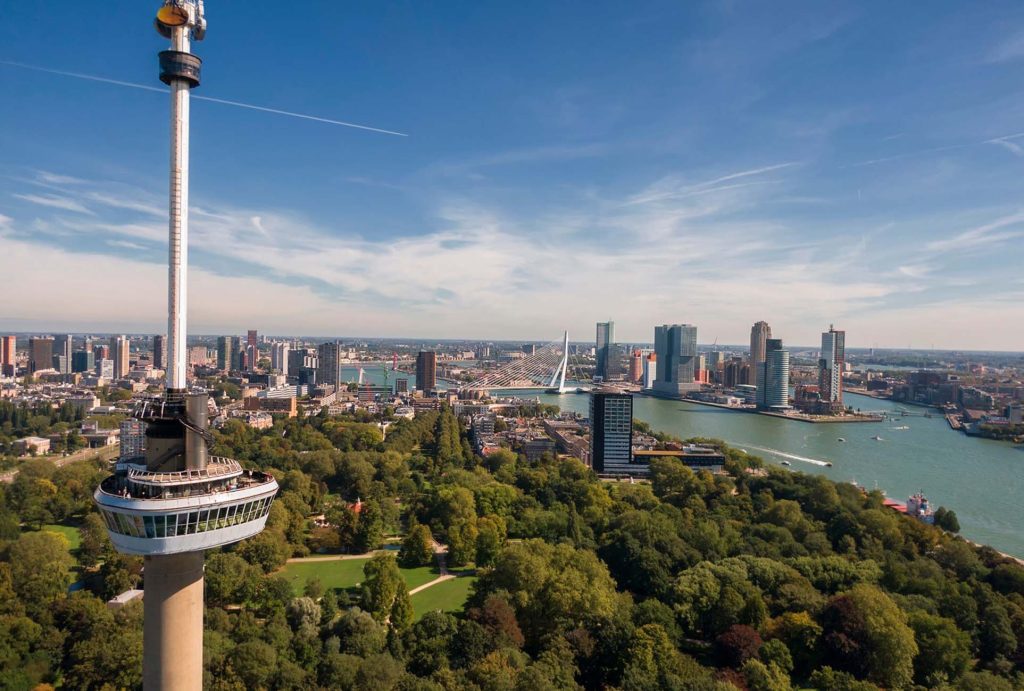
From the top, I could see the entire city stretching out beneath me—ships moving along the port, the Erasmus Bridge in the distance, and the urban landscape framed by the water. What’s really special is that the Euromast also offers a rotating glass elevator called the Euroscoop, which takes you up even higher for a 360-degree view. If you’re feeling adventurous, you can even book an abseiling experience and rappel down the side of the tower!
The Euromast is located in Het Park, so after enjoying the views, I took a leisurely walk through the green space, which was a nice escape from the city’s bustling streets.
5. The Maritime Museum
Given Rotterdam’s history as one of the largest ports in the world, I knew I couldn’t leave without visiting the Maritime Museum. The museum is located near the waterfront, and it’s a great way to delve into the city’s maritime past. The exhibits cover everything from shipbuilding to global trade routes, and I found the interactive displays particularly engaging.
One of the highlights for me was the chance to board a historic ship moored outside the museum. It felt like stepping back in time as I wandered through the wooden decks and imagined life at sea. The museum is very family-friendly, with plenty of hands-on activities for kids, but I enjoyed it just as much as an adult looking to learn more about Rotterdam’s shipping heritage.
6. Rotterdam Centraal Station
Though it may sound odd to list a train station as a must-see landmark, Rotterdam Centraal Station is far from ordinary. When I first arrived in the city, this was my entry point, and the building itself left a lasting impression. The sleek, modern design is a striking contrast to traditional European train stations.
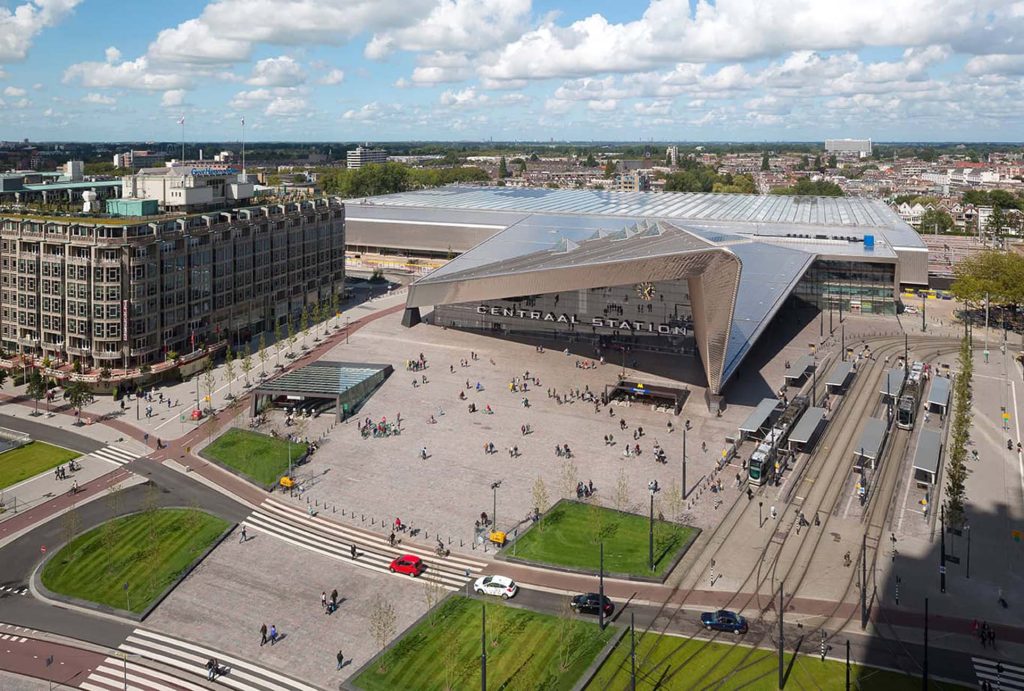
The station’s angular roof and spacious interior are perfect examples of Rotterdam’s forward-thinking architecture. It serves as a central hub, connecting Rotterdam to other cities in the Netherlands and Europe, making it a vital part of my travel experience. Even if you’re not taking a train, I recommend visiting just to admire the architecture. Plus, it’s surrounded by shopping streets, restaurants, and cafes, so it’s a great starting point for exploring the city.
7. Delfshaven
To step back into Rotterdam’s more traditional past, I ventured to Delfshaven, one of the few parts of the city that survived the World War II bombings. Walking through this charming neighborhood felt like stepping into a different era. Cobblestone streets, 17th-century buildings, and canals lined with boats give Delfshaven a distinctly historical atmosphere.
I visited the Pilgrim Fathers’ Church, where English pilgrims gathered before sailing to the New World. The area is also home to cozy cafes and traditional Dutch taverns. It was a peaceful contrast to the city’s more modern areas, and I recommend taking an afternoon to explore this hidden gem.
8. Kunsthal Rotterdam
For art lovers, the Kunsthal is a must. This contemporary art museum is known for its rotating exhibitions, which feature everything from classical masterpieces to modern installations. During my visit, I was lucky to catch an exhibition on surrealist art that left me inspired. The museum’s design is as intriguing as its exhibitions—another example of Rotterdam’s bold architectural landscape.
Unlike traditional art museums, Kunsthal’s exhibitions change frequently, so each visit offers something new. It’s located near the Museumpark, so I spent some time strolling through the park after soaking up the art.
Rotterdam is a city of contrasts. Its modern skyline is complemented by pockets of history, and its landmarks reflect a city that has risen from the ashes and embraced innovation. From the quirky Cube Houses to the stunning views from the Euromast, my journey through Rotterdam was one of discovery and inspiration.
